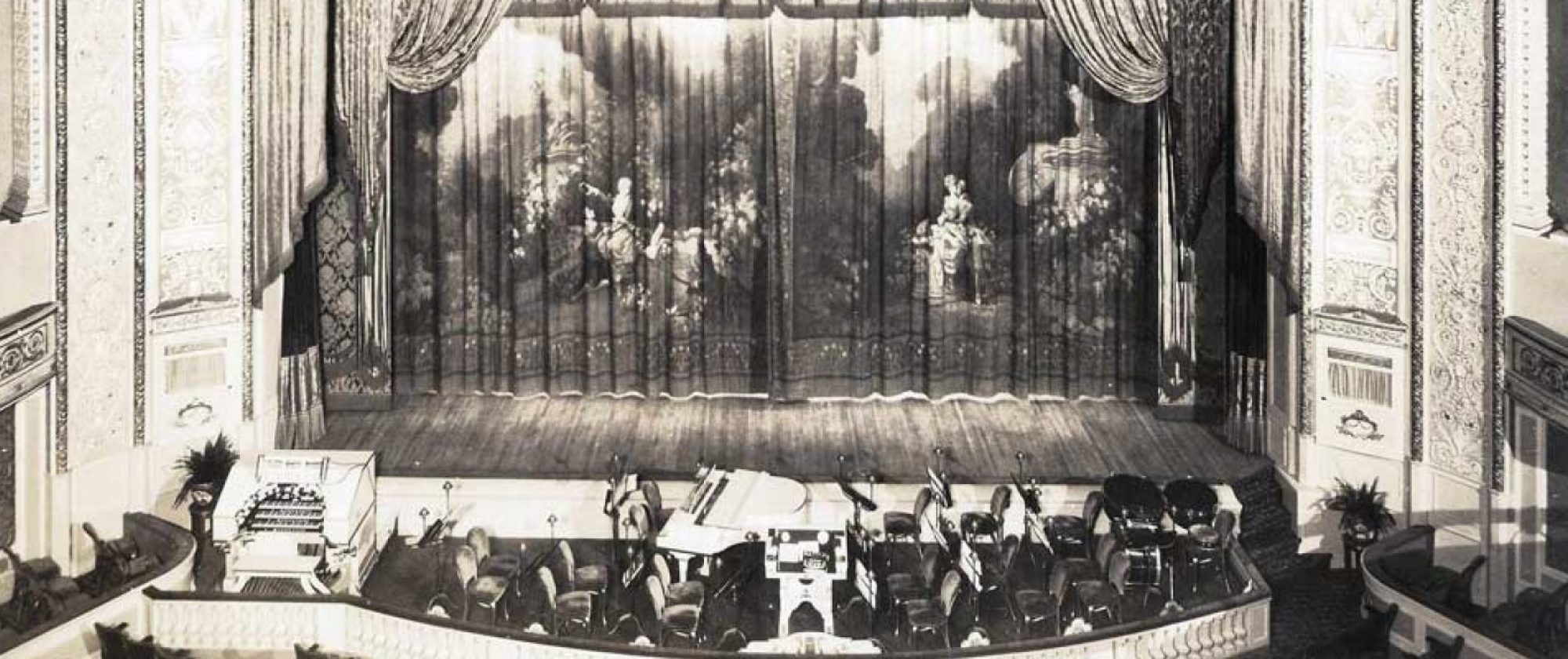15 Mins.; Three (Curtained Stage). Near the close of the Broadway show Monday night this operatic singing trio appeared. First one man sings a solo, the stage is darkened and on the relight a woman appears alone. She sings and again the dark change and the other member of the trio appears for a solo. Here in succession are three solos. For the finish the trio offers the prison scene from “Faust,” with one of the men displaying the most villainous looking Satanic makeup seen hereabouts in a long time. The trio offers nothing but the work of the classic masters. The tri-singing combination evidently was forced over here by the war.
[New Act] Piano and Singing. 14 mins; one. Two clean cut young chaps dressed in belted brown sack coats and white flannel trousers. One handles the piano and doubles lyrically. They open with a medley about the kind of songs the public like. Another double gave them a good start. Both have appearance and the turn should develop into a big timer shortly. The singer possesses a nice personality and doesn’t strain too much for comedy. It’s a very pleasing act right now and could go into the more pretentious bills in an early spot.
The American Roof is an institution in its way much like Tony Pastor’s was a generation ago. There’s a certain individuality and character about the Roof just as there was about Pastor’s famous old variety house that many a far more modern and pretentious vaudeville theatre might well envy. Like Pastor’s, too, the Roof has a clientele all its own, discriminating, quick to recognize and appreciate talent and charitably disposed towards mediocrity. And to further carry out the parallel the Roof, like Pastor’s has its own way of arranging the sequences of its bills.
11 Mins.; One. The Manhattan Trio appear in opera cloaks or capes and carrying canes. Afterward they wear simple evening dress. It is some appearance when these three boys, graded in size (although their evening dress coats are all of the same length) strut upon the stage, and start to sing. They have a mixed selection of songs, doing their best with “Hats Off to You, Mr. Wilson.” This put them over in an early spot. It’s hard to forget that the trio looked quite nifty with the capes and canes (almost English), and a kindly motive prompts the suggestion that they permit the capes and canes to become a part of the entire turn, not removing them while on the stage.
14 Mins; Two. Al White is singing five songs, running the gamut from popular rag to the sentimental ballad. He carries a pianist using a grand piano.
10 Mins.; One. It could be asked – Why blame it upon Atlantic City? – but from information which should be correct, Smiling Bunny Gray did play in Atlantic City – once, perhaps longer. Maybe she played in vaudeville. The Hammerstein program says she was found on the Boardwalk. That’s rough talk for a program to send over anent a featured attraction in Broadway’s big time vaudeville. And the program calls the young woman without a voice “Similing Bunny Gray.” Bunny didn’t live up to her billing Monday evening. She didn’t smile, but used up four songs, one a ballad, walked carelessly around the stage, some times stepped over the chain almost into the footlights, then stepped back again, not smiling even then, and the most noticeable indications were that bunny wanted to do “nut stuff,” but didn’t know how to go about it. Maybe she wasn’t familiar enough with her surroundings. But if Bunny is drawing a regular vaudeville salary for this week’s work, she can smile at that, although she isn’t apt to remain long in vaudeville. It’s probably back to the cabaret for Bunny, but Bunny won’t care if her listleness in working gives a true line on her hopes and ambitions. “She Sings Songs in Her Own Unique Way,” adds the program.
Chapelle and Stinette, following, produced two voices that filled every part of the house. They sing with feeling and animate the lyrics. The reception following was deserved, and the colored team further obliged the house by giving an impression of Jack Norworth and Nora Bayes in a version of “Mandy.”
Aileen Stanley, the “Personality Girl,” went for big score on seventh. She gave eight or nine numbers in all, half of them being encored. Miss Stanley is recently out of William Rock’s “Silk and Satins. But for her vaudeville return the routine is all of published numbers. No doubt some well wishers aided in the returns, but Miss Stanley’s ability to handle lyrics is exceptional, and through that she won a lot of legitimate appreciation. With “Broadway Blues” she did excellently, and did more with “Bimbo” than several others using the number could do evenly together. There was a new novelty number of two, not yet established. Miss Stanley stands out from the usual, and it would be interesting to see what she could do with restricted material.
Gene and Katherine King do a nifty little fifteen minutes. Katherine wears a trick dress on her entrance and makes a change in full view of the audience toward her exit. They harmonize well and their material is fair.
Gorman Brothers, locals of yesteryear, two young fellows with amiable individualities and easy methods of selling hoakum in song, wafted away with the applause honors, gleaned largely on the smooth and telling endeavors of the comic, the blond brother, though the more sedate, one of darker hair fitted in like a true partner.
